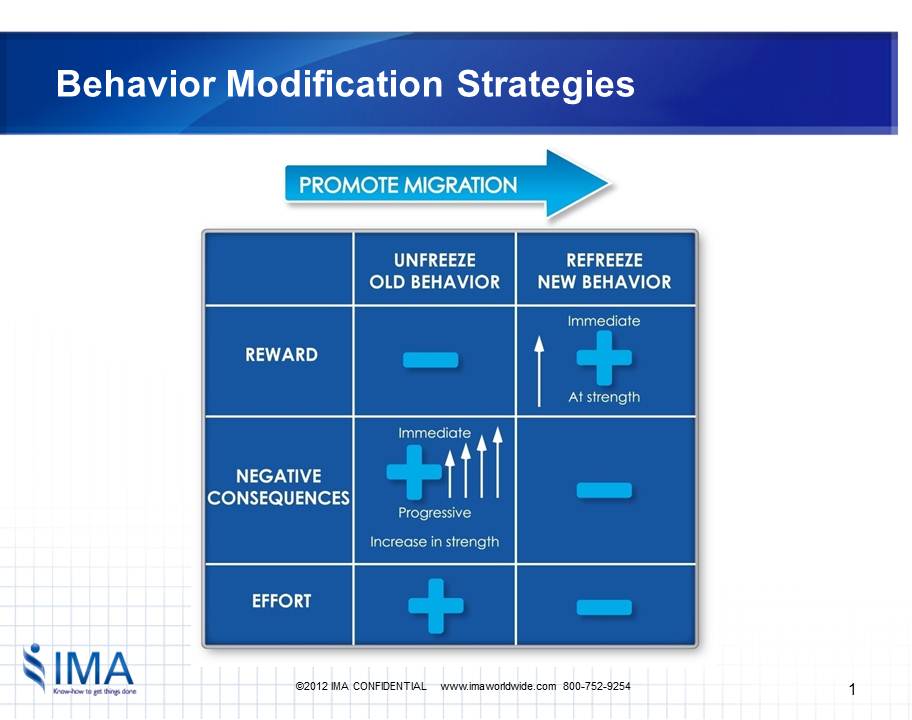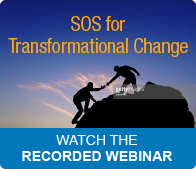One of the greatest challenges of transformational change is getting people to let go of the old ways, and adopt the new changes. Unless this happens, there is no real transformation-- simply stated, if there is no behavior change, there is no transformation. 
The challenge is that these behaviors occur because there "either was or is a reward for that behavior." The only way to change the behavior is to change the reinforcements. To get the radically different behaviors required for transformational change you will need to have radically different reinforcements.
Reinforcement management is less about the formal compensation and performance management systems and much more about the interaction between a manager and his or her direct report. You will never drive transformational change if you just change the semi-annual performance review-- it's way too infrequent.
There are strategies that managers can apply that will promote the letting go of the old behaviors (unfreezing) and promote the adoption of the new transformational behaviors (refreezing.)
These behavior modification strategies are grounded in behavioral science research, but are very practical techniques for ensuring the migration.
Reinforcement management includes rewards, consequences, and level of work effort. These three different levers can be applied to drive behavior change. To go from an old behavior to a new behavior:
- Decrease the rewards for the old: increase the rewards for the new
- Increase the negative consequences for the old ways; decrease any negative consequences for the new
- Increase the level of effort for the old; decrease the level of effort for the new (make it easier to use)

However, keep in mind that you will need to build in many more positive rewards than negative consequences to drive the migration of new behaviors because people tend to focus on the negative much more than on the positive. Most people have experienced a situation where there was lots of positive feedback for some work effort, and just a single negative comment. But what sticks in our heads? Of course, that one negative comment!
In fact, research has shown that there is a 4:1 ratio between positive and negative reinforcement. It takes 4 positive reinforcement events to equal just one negative. So even when a manager feels like he or she is over-doing the positive rewards, the employee perceives the number of positive rewards much differently!
To drive the migration of new behaviors, the timing of these rewards is also important. You will see far greater results if consequences are positive, immediately following the behavior, and certain to occur. (PICS)
Conversely, you will have far less impact on driving transformational change if the consequences are overly negative, occur sometime in the future rather than immediately following the behavior, and uncertain. (NICS)
What are the implications of these principles to your transformational change:
1. Ensure the positive and negative consequences and level of effort in the present state support unfreezing from the old behavior.
2. To move from the present state, you should analyze what the "PICS and NICS" are for changing from the old behavior to the new behavior.
3. Develop a reinforcement plan that adds some NICs to doing the old behavior and some PICS to the new behavior consequences.
4. Make the negative consequences progressively more powerful over time, but begin with immediate and powerful positive consequences.
4. Increase the level of effort for the old ways while decreasing the level of effort for the new ways; make it easier to use the new ways.
By strategically and tactically applying these concepts to your transformational change you will support the migration to new patterns of behavior. Remember that you will need to develop implementation-specific reinforcements to ensure adoption of changes.
No change in reinforcements, no transformation! It's just that simple.


